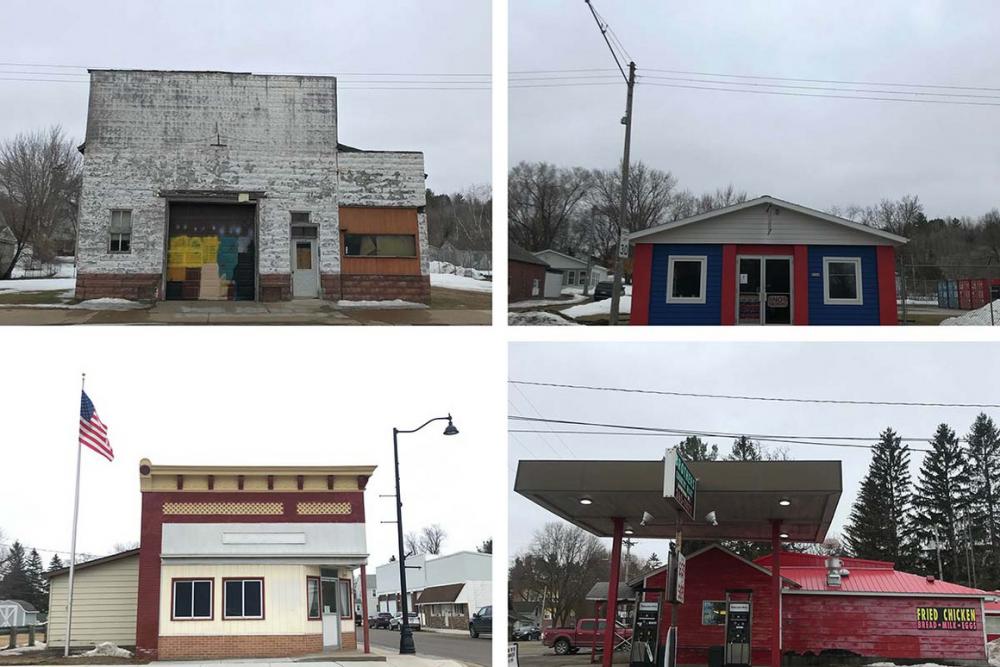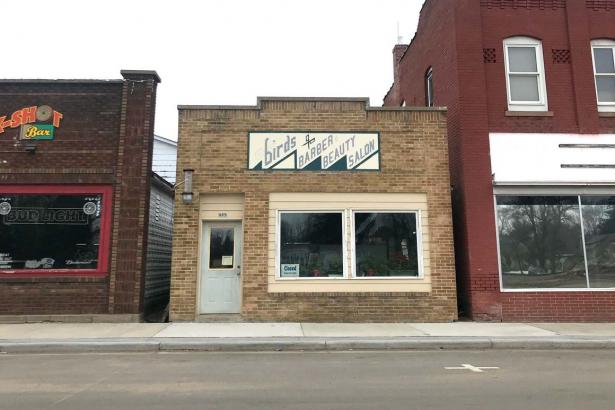I am a sixth-generation native of Dunn County in rural west-central Wisconsin, a rolling landscape of forested ridges and farmed valleys, tied together by twisting roads and meandering rivers. My ancestors came here 150 years ago and farmed 6 miles south of where my wife and I currently raise our family. With a population of 45,000, Dunn County is a swing county in a swing state: The county went for Barack Obama in 2008 and again in 2012, then for Donald Trump in 2016.
After Trump’s election, I was one of those people who stepped off the sidelines. On election night, I turned off the television as the race was being called, climbed into the bed of my sleeping 5-year-old son, Frankie, and lay there in the dark with him, wondering what this would mean for his future. As a longtime political independent, I decided to join a political party for the first time in my life, and by 2019, I became chair of the Dunn County Democratic Party. It turned out many others here felt the way I did about Trump.
What I saw in the county as the 2020 election approached might surprise those who assume there’s no such thing as progressive organizing in rural areas. Starting in 2018, participation in the Dunn County Democrats surged. Membership grew by 30 percent. Our ranks of volunteers tripled. Local fundraising expanded. We opened a headquarters early in the election cycle, and laid out clear goals and a timeline, focused on local organizing and engaging new people to encourage them to vote Democratic, both on the presidential ticket and in state Legislature races.
Before Covid-19 hit, we held house meetings across the county, gathering residents in living rooms or around dining room tables to share stories about why the election was personal to them. When the pandemic came, we rented billboards, and our volunteers assembled along bridges holding up signs that read “V-O-T-E D-E-M-O-C-R-A-T.” We built a deep canvassing program to engage infrequent voters with phone conversations that focused on their personal experiences and values. My excitement grew as I witnessed more and more people who had never been involved in political organizing stepping forward.
Yet, good organizing was not enough to win Dunn County. In November, Trump voters turned out in force, even stronger than they had in 2016. Despite all the work we did as Democrats, there were more Trump yard signs than four years ago; more flags in support of the president flew from more flagpoles and pickup trucks. It wasn’t just Dunn County. Roughly two-thirds of rural voters across the country cast their ballots for Trump. Any election results map you look at offers a bleak visualization of the political divide between rural and urban voters: a sea of red dotted with islands of blue.
Why did Trump do so well with rural voters? From my experience, it’s not because local Democrats failed to organize in rural areas. Instead, after conversations with dozens of voters, neighbors, friends and family members in Dunn County, I’ve come to believe it is because the national Democratic Party has not offered rural voters a clear vision that speaks to their lived experiences. The pain and struggle in my community is real, yet rural people do not feel it is taken seriously by the Democratic Party.
My fear is that Democrats will continue to blame rural voters for the red-sea electoral map and dismiss these voters as backward. But my hope is for Democrats to listen to and learn from the experiences of rural people.
The signs of desperation are everywhere in communities like mine. A landscape of collapsed barns and crumbling roads. Main Streets with empty storefronts. The distant stare of depression in your neighbor’s eyes. If you live here, it is impossible to ignore the depletion.

Rural people want to share in America’s prosperity, but the economic divide between rural and urban America has widened. Small-business growth has slowed in rural communities since the Great Recession, and it has only worsened with Covid-19. As capital overwhelmingly flows to metro areas, the small-town economy increasingly is dominated by large corporations: low-wage retailers like Dollar General or agribusiness firms that have no connection to the community.
The source of our wealth is in the things we grow. But today, those things get shipped off into a vast global supply chain, where profits are siphoned off and little remains for us to save or invest. Farmers’ share of every retail food dollar has fallen from about 50 percent in 1952 to 15 percent today. Corporations control more and more of the agriculture business—from the seed and fertilizer farmers buy to the grain, milk and meat they sell—sucking out profits instead of giving farmers a fair price or a fair shot at the market. Every day, small farmers are squeezed: They can either expand their operations and take on more debt in an attempt to produce more, or close their business entirely because of chronically low commodity prices.
The digital divide is also real: About 28 percent of rural Wisconsinites lack high-speed internet, which stifles rural economic growth. Working from home or starting a new business is next to impossible in today’s economy without high-speed internet. Kids can’t learn from home without it either.
Rural health care is a disaster. At least 176 rural hospitals have closed since 2005, the majority of them in the past 10 years; it’s generally not profitable for hospitals to operate in low-population areas. Wisconsin has not been hit as badly as other states, but those hospitals that remain open in rural parts of the state are scaling back services and struggling to retain doctors. In my own county, there are zero ICU beds, even as Covid infection rates surge. Our profit-based health care system is failing rural people.
Rural people in Wisconsin are dying by suicide at rates higher than folks in suburban and urban parts of the state. This is not just a matter of poor mental health services—many rural counties lack a single practicing psychiatrist. It is also about an inescapable feeling of failure and an overwhelming sense that there is no future here.
The sad thing is none of this is an accident. It is the result of decades of policy decisions—by Republicans and Democrats—that deplete our communities.
Rural voters appreciated Obama’s repeated campaign promises to challenge the rise of agribusiness monopolies. But as president, he allowed for the continued consolidation of corporate power in the food system. His Department of Agriculture balked when it came time to enforce anti-monopoly rules such as those in the Packers and Stockyard Act, and failed to enforce Country of Origin Labeling, which would have allowed independent farmers and ranchers to better compete within the consolidated meat industry. The Obama Justice Department and Federal Trade Commission presided over a series of corporate mergers in the food and agriculture sectors, including the Kraft-Heinz and JBS-Cargill mergers. Taken together, these moves signaled that his administration did not have the backs of family farmers.
This is a large part of why Trump won Dunn County decisively in 2016 and in 2020. I have spoken with supporters of the president who were well aware of his shortcomings or admitted to disliking his leadership style, but who nonetheless believed he was willing to stand up to “elitist” Democrats and fight for citizens like them. For years, rural people have heard they are voting “against their own self-interest” when they elect Republicans, or that they vote the “wrong way” because they are uneducated. These are arrogant and damaging messages that are not easily forgotten. The reality, as I saw in my conversations with voters this year, is that many rural people have lost trust in the Democratic Party.
It was not for a lack of effort that the Biden campaign was unable to connect with rural voters this year. In May, Biden convened a virtual “rural roundtable” in western Wisconsin to show the candidate listening to stakeholders about rural economic development, health care and the crisis in Wisconsin’s dairy industry, brought on by chronically low milk prices. Nor was it for a lack of policy proposals: The Biden campaign released an exhaustive “rural plan” for anyone to read. All of these political gestures, however, are filtered through the lens of what political scientist Katherine Cramer calls “rural consciousness”—including a perception that cities are where decisions are made, culture happens and resources flow, and that rural communities are not in control of their own futures. Even as a kid from Scranton, Pennsylvania, Biden was seen as a creature of an establishment that has marginalized rural communities for decades.
Trust is earned slowly. It can’t be earned back with campaign slogans or TV ads. When people feel left behind, they look for a way to make sense of what is happening to them. There is a story to be told about rural America, yet Democrats are not telling it. That leaves an opening for other stories to be told to fill the vacuum—stories that villainize and divide us along racial, geographic and partisan lines. That is the story Trump told, but it’s the wrong one. The real story is that rural people feel our way of life is being sold off. We see the wealth of our sweat and soil being sent away to enrich executives, investors and shareholders.
For Democrats to start telling a story that resonates, they need to show a willingness to fight for rural people, and not just by proposing a “rural plan” or showing up on a farm for a photo op. Rural people understand economic power and the grip it has on lawmakers. We know reform won’t be easy. A big step forward for Democrats would be to champion antitrust enforcement and challenge the anticompetitive practices of the gigantic agribusiness firms that squeeze our communities. In his rural plan, Biden pledged to “strengthen antitrust enforcement,” but the term doesn’t appear until the 35th bullet point. For rural voters, antitrust enforcement is a top priority, and it should be coupled with policies to manage oversupply in commodity markets, so farmers can get a fair price. Another step forward would be an ambitious federal plan, in the spirit of the New Deal’s Rural Electrification Act, to bring high-speed internet to every corner of America.
What rural voters want is a glimmer of hope that things will change. They want politicians who see a future for rural communities in which food production is localized, energy is cheap and clean, people have good jobs, soil is healthy, Main Street is bustling with small businesses, schools are vibrant and everyone can see a doctor if they need to. Here in Wisconsin, we can look back in our state’s rich history of progressive populism to a time when politicians like Bob LaFollette, our former governor and U.S. senator, understood that concentrated wealth and corporate power are a threat to people’s livelihoods. As president, Biden will have the chance to prove he understands this, too. Democrats can win rural Wisconsin again, but they’ll need to try.
Bill Hogseth is chair of the Dunn County Democratic Party in Wisconsin.


Spread the word